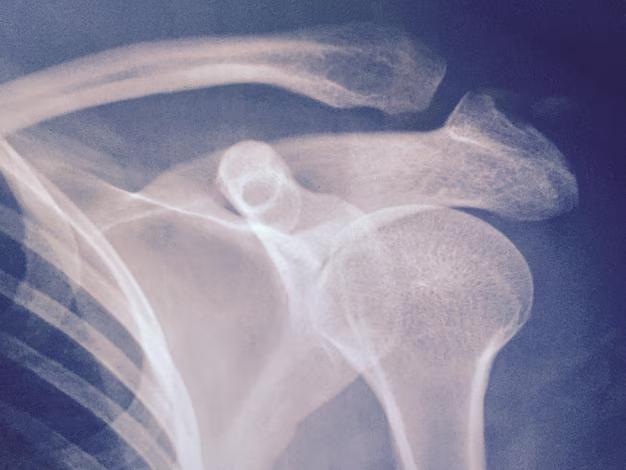Understanding the Anatomy Behind Shoulder Arthritis
Have you ever stopped to think about how much your shoulders do for you every day? From simple tasks like lifting your morning coffee mug to more complex activities like playing a game of tennis, your shoulders are constantly at work. So, it's no wonder that shoulder arthritis can be particularly debilitating, affecting nearly every aspect of daily life. But what exactly is involved in the anatomy of shoulder arthritis? Let’s delve into this topic to gain a better understanding of how arthritis impacts this essential joint.
🦴 Anatomy of the Shoulder: A Complex Structure
To understand shoulder arthritis, it's crucial to first grasp the basic anatomy of the shoulder. The shoulder is one of the most mobile joints in the human body, consisting of three main bones: the humerus (upper arm bone), the scapula (shoulder blade), and the clavicle (collarbone). These bones form two joints:
- Glenohumeral Joint: This ball-and-socket joint is where the head of the humerus meets the glenoid cavity of the scapula.
- Acromioclavicular Joint: Located at the top of the shoulder, this joint connects the clavicle to the acromion, the highest point of the shoulder blade.
The Role of Cartilage
Within these joints, cartilage plays a fundamental role. It is a smooth, slippery tissue that covers the ends of bones, allowing for smooth and pain-free movement. When cartilage is healthy, it facilitates easy movement by minimizing friction. However, in cases of arthritis, this cartilage deteriorates, leading to bone-on-bone contact and significant pain.
Ligaments and Tendons
The shoulder’s stability is largely due to the rotator cuff, a group of muscles and tendons that surround the joint, keeping the head of the humerus firmly within the shallow socket of the scapula. Ligaments within the shoulder, such as the coracohumeral ligament and the glenohumeral ligaments, provide additional stability.
Synovial Membrane
The joints also contain a synovial membrane, which produces synovial fluid to lubricate and nourish the joints. In shoulder arthritis, inflammatory changes can affect the synovial membrane, contributing to pain and stiffness.
🔎 Types of Shoulder Arthritis
Different types of arthritis can affect the shoulder, each impacting the joint in distinct ways. The most common types include:
Osteoarthritis
Often referred to as "wear and tear" arthritis, osteoarthritis involves the gradual wearing down of cartilage. Over time, the cartilage becomes thinner and may completely wear away, resulting in painful bone-on-bone contact.
Rheumatoid Arthritis
Rheumatoid arthritis is an autoimmune condition where the body’s immune system mistakenly attacks the synovial membrane, leading to inflammation, pain, and eventually joint damage.
Post-Traumatic Arthritis
This type occurs after an injury to the shoulder, such as a fracture or severe sprain. Such injuries can lead to accelerated wear and tear or cause acute damage that evolves into arthritis.
Rotator Cuff Tear Arthropathy
This form of arthritis develops following a large, untreated tear in the rotator cuff, which can lead to changes in the shoulder mechanics and ultimately arthritis.
Avascular Necrosis
In avascular necrosis, blood supply to the ball portion of the humerus is disrupted, leading to the death of bone tissue and subsequent arthritis.
🧠 The Impact of Arthritis on Shoulder Anatomy
Joint Damage and Deformities
As the protective cartilage deteriorates, bones may rub against each other, leading to the formation of bone spurs. Over time, the joint structure may change, causing deformities and reduced mobility.
Inflammation and Swelling
Chronic inflammation is a hallmark of arthritis, particularly in autoimmune forms like rheumatoid arthritis. This can lead to visible swelling and a warm sensation around the shoulder joint.
Muscle Weakness
As arthritis progresses, the muscles that surround and stabilize the shoulder might weaken due to disuse or altered mechanics, further impacting joint stability and function.
🔬 Diagnosing Shoulder Arthritis
If you suspect shoulder arthritis, medical evaluation is essential. Diagnosis often involves:
- Physical Examination: A healthcare professional will assess your range of motion, pain level, and joint stability.
- Imaging Tests: X-rays and MRIs can reveal the extent of joint damage, presence of bone spurs, or soft tissue conditions.
- Lab Tests: Blood tests might be conducted to rule out specific types of arthritis, like rheumatoid arthritis.
🌱 Enhancing Shoulder Health: What You Can Do
Understanding the anatomy involved in shoulder arthritis can empower you to take steps that may help manage or reduce symptoms. Here are practical tips:
- Stay Active: Engage in low-impact activities to maintain joint flexibility without stressing it.
- Strengthen Muscles: Focus on exercises that strengthen the shoulder muscles, particularly the rotator cuff.
- Maintain a Healthy Weight: Reducing stress on joints can alleviate symptoms.
- Optimize Ergonomics: Ensure your workspace or activities do not place undue stress on your shoulders.
🚀 Quick Summary: Key Takeaways
📍 Bone Structure: The shoulder involves the humerus, scapula, and clavicle forming the glenohumeral and acromioclavicular joints.
📍 Cartilage and Ligaments: Cartilage ensures smooth movement, while ligaments provide stability.
📍 Types of Arthritis: Osteoarthritis, rheumatoid arthritis, post-traumatic arthritis, among others affect the shoulder.
📍 Impact: Leads to joint damage, inflammation, and muscle weakness.
📍 Diagnosis: Involves physical exams and imaging tests.
📍 Management Tips: Stay active, strengthen muscles, and maintain a healthy weight.
🌀 Taking Control of Shoulder Arthritis
While shoulder arthritis can be challenging, understanding the involved anatomy provides a solid foundation for navigating the condition effectively. Awareness and proactive management can play significant roles in preserving shoulder function and improving quality of life. Remember, it's always best to consult with healthcare professionals for personalized advice tailored to your specific condition. Stay informed and proactive in your approach to shoulder health!

Related Topics
- a Septic Arthritis
- Are Bananas Bad For Arthritis
- Are Tomatoes Bad For Arthritis
- Can An Inflamed Nerve Cause Arthritis
- Can An Inflamed Nerve Cause Arthritis In Dogs
- Can An x Ray Show Arthritis
- Can Arthritis Be Cured
- Can Arthritis Be Reversed
- Can Arthritis Become Septic After Infection From Injection
- Can Arthritis Cause Numbness